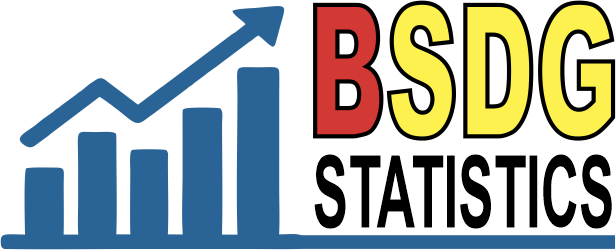OPTIMASI VALUASI EKONOMI ENDAPAN NIKEL LATERIT MEMPERHITUNGKAN BIAYA LINGKUNGAN
OPTIMIZATION OF THE ECONOMIC VALUATION OF LATERITIC NICKEL DEPOSITS CONSIDERING ENVIRONMENTAL COSTS
Abstract
Optimization of mineral economic valuation aims to determine the maximum net present value of a project over the life of mine. The economic valuation optimization model in this study is the development of the Lane (1988) and Sasongko (2013) model by considering environmental costs and referring to the cash flow framework. The research methods are include the following: (1) resource modeling and estimation, (2) mineral economic valuation modeling, (3) solution model determination, and (4) mineral economic valuation. Resource modeling in the block model with a size of 25 m x 25 m x 1 m. The block content estimation uses the inverse distance weighting (IDW) interpolation method. Economic valuation optimization modeling in this research is modeling in terms of cash flow by considering environmental costs and government policies such as taxes, royalties, and depreciation. Optimizing cut-off grade is an attempt to determine the optimum grade that will produce the maximum profit or net present value (NPV). The solution model in this case includes cut-off grade optimization for profit optimization and NPV optimization. The model solution to determine the optimum cut-off grade depends on constrains of the mining, concentrating and refining. Determination of the cut-off grade optimization model solution using analytical methods. In the case study, the estimated amount is US$4,253,566 tons of nickel ore. At a constant mining rate at an optimum level of 0.95%, the mine life is 4.85 years with an NPV of US$811,248,447. Optimization of economic valuation with NPV indicator, the life of mine of 4.44 years and maximum NPV of US$841,596,460. The cut-off grade value varies in each mining year: the 1st year with a grade of 0.99%; 2nd year level 0.99; 3rd year level 0.98%; 4th year level 0.97%; 5th year the rate is 0.95%. NPV economic valuation optimization has a greater value and shorter time, compared to profit optimization (profit).
Downloads
References
Asy’ari, M. A. 2011. Geologi dan Estimasi Sumberdaya Endapan Nikel Laterit Dengan Metode IDW (Inverse Distance Weight) dan Kriging Pada Daerah Bahodopi, Kabupaten Morowali, Provinsi Sulawesi Tengah. Tesis. Yogyakarta: Program Pasca Sarjana Teknik Geologi FT UGM.
Cetin, E., dan P. A. Dowd. 2013. Multi-mineral cut-off grade optimization by grid search. Journal of the Southern African Institute of Mining and Metallurgy Vol. 113 (8). h. 659–665.
Crundwell, F. K. 2008. Finance for Engineers: Evaluation and Funding of Capital Projects. London: Springer-Verlag London Limited. 622 h.
Gholamnejad, Javad. 2008. Determination of the Optimum Cutoff Grade Considering Environmental Cost. J. Int. Environmental Aplication & Science Vol. 3 (3). h. 186–94.
Hustrulid. M., Kuchta, R., Martin. 2013, Open pit Mine Planning & Design. CRC Press/Balkema: London
Kržanović, Daniel, Božo Kolonja, & Dejan Stevanović. 2015. Maximizing the net present value by applying an optimal cut-off grade for long-term planning of the copper open pits. Acta Montanistica Slovaca Vol. 20 (1). h. 49–61.
Lane, K. F.. 1964. Choosing the Optimum Cut-Off Grade. Quarterly of the Colorado School of Mines. h. 811–829.
Lane, K. F.. 1988. The economic definition of ore, cut-off grade in theory and practice. 156 h.
Osanloo, M., dan M. Ataei. 2003. Using equivalent grade factors to find the optimum cut-off grades of multiple metal deposits. Minerals Engineering Vol. 16 (8). h. 771–776.
Osanloo, M., F. Rashidinejad, dan B. Rezai. 2008. Incorporating environmental issues into optimum cut-off grades modeling at porphyry copper deposits. Resources Policy Vol. 33 (4). h. 222–229.
Rahimi, Esmaeil, dan Hasan Ghasemzadeh. 2015. A new algorithm to determine optimum cut-off grades considering technical, economical, environmental and social aspects. Resources Policy Vol.46. Elsevier. h. 51–63.
Rahimi, Esmaeil, Kazem Oraee, Zia Aldin Shafahi Tonkaboni, dan Hasan Ghasemzadeh. 2014. Considering environmental costs of copper production in cut-off grades optimization. Arabian Journal of Geosciences Vol. 8 (9): h. 7109–7123.
Rashidinejad, F., M. Osanloo, dan B. Rezai. 2009. Cutoff grades optimization with environmental management; a case study: Sungun copper project. IUST International Journal of Engineering Science Vol. 19 (5). h. 1–13.
Sasongko, W., A. Idrus, dan L. Lintjewas. 2013. Kajian Kadar Batas Optimum (Optimum Cut-Off Grade) pada Penambangan Nikel Laterit dengan Penjualan dalam Bentuk Material Bijih Mentah. Annual Engineering Seminar 2013. h. 89–92.
Setiawan, Eko Billy, dan Sasongko, W. 2015. Pemodelan kadar batas optimum endapan nikel laterit dengan penjualan dalam bentuk konsentrat dan memperhitungkan biaya pengupasan material penutup. Proceeding Seminar Nasional Kebumian ke-8. h. 854–864.
Simanjuntak, T. O., E. Rusmana, dan J. B. Supandjono. 1994. Geologi Lembar Bungku Skala 1:250.000. Bandung: Pusat Penelitian dan Pengembangan Geologi. 13 h.
Copyright (c) 2022 Buletin Sumber Daya Geologi

This work is licensed under a Creative Commons Attribution-NonCommercial-ShareAlike 4.0 International License.
Authors whose manuscripts are published agree to the following terms:
The publication rights of all journal manuscript materials published on the Buletin Sumber Daya Geologi website are held by the editorial board with the knowledge of the author (moral rights remain with the manuscript’s author).
The formal legal provisions for access to digital articles in this electronic journal are subject to the terms of the Creative Commons Attribution-ShareAlike (CC BY-SA) license. This means that Buletin Sumber Daya Geologi has the right to store, convert media/formats, manage in the form of a database, maintain, and publish the article without requesting permission from the author, as long as the author’s name is cited as the copyright holder.
Manuscripts published in both print and electronic formats are open access for educational, research, investigative, and library purposes. Beyond these purposes, the editorial board is not responsible for any violations of copyright law.















